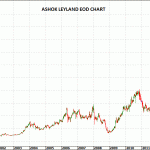
In Continuation to Part II – Complete Guide on Investing in Indian Markets – Investing In Index where we outlines how an investor can participate in the growth of the economy by investing in the markets via Index ETFs (NiftyBees, JuniorBees, BankBees). Index investment gives investor an edge to stay with the large cap and top performing companies from the wide or specific sectors from the Indian economy. To extend it further, the investor can invest in markets via Mutual Funds.
This article helps investor to understand how investing in mutual funds diversify the financial portfolio and build long term wealth to achieve the financial goals vis a vis managing the investment risk.
So, lets start with the very basics of mutual funds and later extends further on how, why, and where to invests in mutual funds?
What are Mutual Funds?
Simply put, a mutual fund is a financial product that pools funds from individuals (investors) & invests in various assets such as equity, debt or gold on their behalf. Mutual Funds are managed by Asset Management Companies or preferably known as AMCs who assemble up funds from the investors, appoint fund managers and put investors fund into stocks and other asset classes to help them achieve their financial goals and in-turn deduct fund management charges, etc.
Today, mutual funds are playing a very vital role to help route investments in equities and are one of the preferred way for investing in the markets by individuals as well as corporate to diversify their risk and attain return on their investments.
Short History of Evolution of Mutual Funds in India
In 1963, Government of India and Reserve Bank of India took initiative to start the mutual funds in India with the formation of Unit Trust of India (UTI). The first scheme launched by UTI was Unit Scheme 1964 and within 25 years that is at the end of 1988 UTI had Rs. 6,700 crores of assets under management (AUM). In 1987, public sector mutual funds were set up by public sector banks, Life Insurance Corporation of India (LIC) and General Insurance Corporation of India (GIC). Within 6 year (By 1993), the mutual fund industry increased exponentially with the assets under management of Rs. 47,004 crores which now is somewhere around Rs. 13.5 lac crores.
Before You Buy?
What is required to Invest in Mutual Funds?
To start investing in a fund scheme, any investor need to fulfill the KYC requirements first i.e. you need a PAN Number, Recent passport size photograph, Proof of address, Bank account and KYC application form to be signed. For bank account, a cancelled bank cheque leaf having the name of the investor, MICR & IFSC details should be submitted.
You will need to submit copies of all these documents by self-attesting them along with originals for verification. In case the original of any document is not produced for verification, then the copies should be properly attested by entities authorized for attesting the documents.
How to check your KYC status?
Existing investors and those who have submitted their applications can check the status on KYC compliance with their PAN number with any of the KYC Registration agency.
https://www.cvlkra.com/
Why Mutual Funds Investment makes Sense for Investors?
Beat Inflation
Having your money in the savings bank or fixed bank won`t help you beat inflation. Any decrease in purchasing power of rupee due to inflation should be beaten up by the returns from investments or savings.
Professional Management
Mutual funds have a team of qualified professionals and researchers who analyses the performance and prospects of companies they are or willing to invest in to achieve the objectives of the scheme.
Diversification
Mutual fund gives investor an opportunity to diversify his existing investment portfolio style by investing some part of the funds directly into stocks, bonds, or in mutual funds. Also, mutual funds are itself a diversified tool as the funds are invested in big sets of stocks or financial instruments around wide financial universe. Diversification lowers your risk of loss by spreading your money across various industries and geographic regions.
Also, Mutual funds provide instant diversification as they are the only tool to get access to diversified portfolio with as small as Rs. 500. Since you are buying units of the mutual funds that are spread across several stocks, you receive diversification benefit without investing a huge corpus.
Affordability
You can invest in mutual funds even with a very small investment of Rs.500 in a SIP on a regular basis. Mutual funds generally buy and sell securities in large volumes which allow investors to benefit from lower trading costs.
Tax benefits
Investments held by investors for a period of 12 months or more qualify for capital gains and will be taxed accordingly. These investments also get the benefit of indexation.
Easy to Buy & Sell
Mutual funds are widely available through banks, financial planning firms, investment firms, credit unions and trust companies. You can sell your fund units or shares at almost any time if you need to get access to your money.
A wide range of Funds
Mutual funds can be used to meet a variety of financial goals used by varied type of investors. These can be used by young or investor approaching retirement to invest in equity or balanced funds or fixed income investments to achieve varied objectives.
Transparency
The performance of a mutual fund is reviewed by various publications and rating agencies, making it easy for investors to compare fund to another. As a unitholder, you are provided with regular updates, for example daily NAVs, as well as information on the fund’s holdings and the fund manager’s strategy.
Liquidity
Not like investment in property or physical gold, mutual funds can be sold any time during the trading hours at the current NAV. With open-end funds, you can redeem all or part of your investment any time you wish and receive the current value of the shares. Funds are more liquid than most investments in shares, deposits and bonds.
Averaging
With rupee-cost averaging, you invest a specific rupee amount at regular intervals regardless of the investment’s unit price. By investing in SIP, it makes investors disciplined by investing every month or quarter rather than making lumpsum investments.
Regulations
All mutual funds are obliged to follow strict regulations designed to protect investors as laid down by SEBI (Securities Exchange Board of India).
Close Ended Mutual Funds
A close ended mutual fund has a predetermined maturity period. Investors can subscribe and invest in the scheme at the time of the initial public issue & thereafter buy or sell the units on the listed stock exchanges.
Open Ended Mutual Funds
Open Ended mutual funds has no limit to the number of investors, shares, or overall size of the fund, unless the fund manager decides to close the fund to new investors in order to keep it manageable. The value or share price of an open-ended mutual fund is determined at the market close every day and is called the Net Asset Value (NAV).
Equity Mutual Funds
Equity mutual funds invests in the growth prospecting companies therefore has no assurance of the principal and return on your investments. These mutual funds diversify investors fund into 50-100 companies from different sectors to generate adequate returns while focusing on reducing and controlling risk on the total portfolio. As the investment is into the companies, the investor becomes part owner and get rights over the profits of the companies as per the proportion of his holding. Better performance from the companies will drive up their profits and inturn returns for the investors.
Debt Mutual Funds
Reasonable assurance for the return of the principal investment and timely payment of the interest based on the rate of interest (also known as the coupon rate) for a specified tenure or the time over which the principal will be returned defines clearly the characteristics of the Debt Mutual Funds. Debt mutual funds as they are less risky than equity based mutual funds brings some stability to the investors portfolio.
Debt Mutual Funds invests in debt based instruments like Treasury Bills, Debentures, NCD, CDs, CPs bonds, Govt. Securities etc. mostly from Companies, state governments and even the central government.
Therefore, investing in Debt Mutual Funds would be ideal if you’re looking at a potentially higher return than Liquid Funds over a medium term time horizon, say 3 to 24 months.
Liquid Funds
The word Liquid simply means “How fast can I get my invested money back?” Liquid Mutual Funds invest in faster maturing debt securities thatswhy they are less riskier and provides returns that are slightly higher than a savings account.
Balanced Funds
Balanced mutual funds are hybrid funds which invests funds in both the debt and equity. Balanced funds are generally well suited for the first time investors as they are well concentrated amongst equity and debt. Debt portion of the balanced mutual funds works as a benefactors from the volatility in equity markets.
Equity-oriented balanced funds have 65 percent or more funds in equities and are tax efficient as long-term capital gains are not taxed. However, short-term capital gains are taxed at 15 per cent. Dividends from equity funds are also tax-free.
Tax Saving Mutual Funds
ELSS finds a flavor amongst the investors as the investment provides tax deduction under Section 80C of the Income Tax Act. Most tax saving ELSS has a lock in period of 3 years.
The lock-in itself has great benefits for the new investors, as this led them to be disciplined in their regular investments.
Monthly Income Plans (MIPs)
MIPs are generally hybrid funds which invests 80-85 per cent funds in debt and 15-20 per cent in equity. MIPs offer regular dividends – monthly, quarterly or half-yearly-and hence can be a source of regular income for the investors. These funds mostly invests the investment corpus in short-maturity, low-risk securities such as treasury bills, certificates of deposit and commercial papers.
Large Cap Mutual Funds
Large-cap mutual funds usually invest 70-85 percent of the fund in the large capitalized companies. Large cap funds gives stability to the portfolio of the investors as the large cap companies like are usually less volatile than mid and small-cap companies.
Index Funds
These mutual funds replicates the performance of the the market or sectoral index. So, they hold stocks in the same proportion as their weight in the benchmark index. Most index funds are large cap oriented and replicates the performance of Nifty Index.
Similar to index mutual funds, there are Index Exchange Traded Funds (ETFs) such as NiftyBees, JuniorBees, or BankBees which replicates the performance of the index and can be bought and sold directly from your trading account in the regular market just like stocks.
Costs Involved in Mutual Funds
In 2009, Sebi had imposed a ban on so-called entry load, which was charged by AMCs at the time of investment to meet distribution and marketing expenses.
Under the existing norms, the maximum expense that an equity scheme can charge to an investor is 2.5% (2.25% for debt funds). According to a June 2015 report by mutual fund tracker Morningstar, expense ratios in India are among the highest. Most countries fall between 1% and 1.70% for asset-weighted expenses for allocation funds, with India and Canada the most expensive at over 2%.
These expenses are generally deducted from the NAV of the fund.
Growth, Dividend or Dividend Re-investment – Which option to choose when investing in Mutual Funds in India?
When investing in mutual funds, the investor has to choose one amongst three options on where to invest: growth, dividend and dividend reinvestment. This will be dependent on the fact of what you are investing for.
So, if you are investing for some long term goal in mind, looking for better returns and do not need any money in between, Growth option is the best one to opt for. While Dividend option can be opted for if you need funds at regular intervals and would want to cash your profits when they are declared. Dividend re-investment can be opted if you like to cash in on your profits then and there, but do not need the money for your own expenses or use, and instead would want to buy more Units under the same scheme.
Visit What Option to Choose when Investing in Mutual Funds – Growth, Dividend or Dividend Reinvestment? for more.
Systematic Investment Plan (SIP) Or Lumpsum While Investing in Mutual Funds in India?
Investor can invest in mutual funds either regularly via SIP or Systematic investment plan or lump sum payments as and when there is availability of funds or opportunities in the market. As timing the markets are often difficult for the newcomers to the investment universe & also to other class of investors. So it makes sense for the investor to draw up a right balance among SIP & Lump-sum while investing in Mutual Funds. SIP amount can be as lower as Rs. 500 every month.
There are few important points to consider while finalizing what to choose between the two:-
1. Create a Right Mix among SIP & Lump-sum by continuously investing in mutual funds via Monthly SIP will ensure investing at every level of the market and offer benefit of averaging the buying price and investing via lump-sum whenever markets have corrected certain percentage after big up moves say 20% of so.
2. SIP gives the benefit to the new investors to be disciplined in their investments and monthly investments from the savings doesn’t hit hard the pockets of the investors. Also, SIP gives the investor the benefit of the law of averaging your investment over the long run by investing at every level of the market and thus average out your buying price, losses and profits giving you better returns and make the investing process more simpler by making him free from timing the market moves.
Taxation for Mutual Funds Investments in India
Dividends
Income received from units of a mutual fund registered with the Securities and Exchange Board of India is exempt in the hands of the unit holder. A debt-oriented mutual fund is liable to pay income distribution tax of 14.1625% and 22.66% on the distribution of income to individual / Hindu Undivided Fund and other persons, respectively. In the case of “money market mutual funds” and “liquid mutual funds” (as defined under SEBI regulations), the income distribution tax is 28.325% across all categories of investors.
Capital Gains
Long-term capital gains arising on the transfer of units of an ‘equity oriented’ mutual fund is exempt from income tax. Short-term capital gains arising on such transactions are taxable at a base rate of 15%. If a transaction is not covered by STT, the long-term capital gain tax rate would be 10% without indexation or 20% with indexation, depending on which the assessee opts for. Short-term capital gains on such transactions are taxable at normal rates.
Advice for New Mutual Fund Investors
Anchor Right Mutual Fund & scheme to Invest
Check the Past performance of the Mutual Fund to invest in
Know options to choose when investing in Mutual Funds – Growth, Dividend or Dividend Reinvestment?
Important Questions & Answers for Indian Mutual Fund Investor
# Where to find the monthly holdings of the Equity Mutual Funds?
You can get the information about the mutual funds holdings from their respective Asset Management Companies (AMCs) website. For HDFC Mutual Funds, you can visit your specific Mutual Fund Scheme on www.hdfcfund.com.
# Do we need to have a dmat account to invest in mutual funds in India?
Mutual funds can be bought and sold offline by filling a form through Mutual fund distributors, independent financial advisers, banks, etc, or can be done online thought AMC or distributor website.
Dmat accounts helps investor to consolidate their total holdings of stocks, mutual funds, bonds, etc at one place and that too in dmat form.
For More, Visit Important Questions & Answers for Indian Mutual Fund Investor
Manage & Advise Investor for Mutual Fund Investments
If you are interested to become an individual Financial Advisor advising your clients for investment in mutual funds, you can register self and get an ARN Code and become AMFI REGISTERED MUTUAL FUND ADVISORS (ARMFA). Visit https://www.amfiindia.com/intermediary/want-to-register-or-renew
KNOWLEDGE IS POWER!



